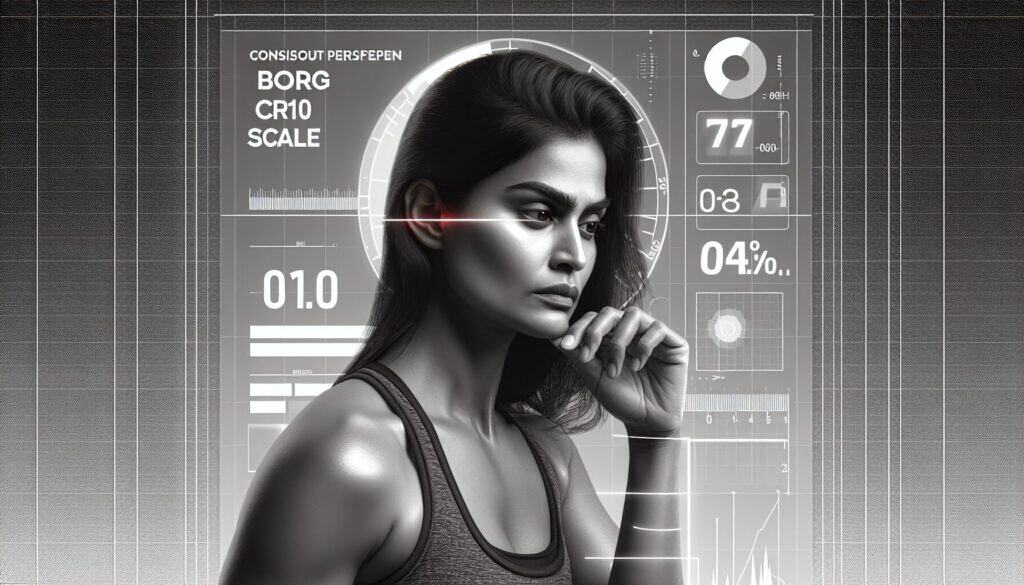Eine subjektive Skala zur Messung der von einer Person wahrgenommenen Intensität von körperlicher Anstrengung, Belastung oder Ermüdung.
- Methodologien: Maschinenbau, Qualität
BORG CR10-Skala (Rate der wahrgenommenen Anstrengung)

BORG CR10-Skala (Rate der wahrgenommenen Anstrengung)
- Kontinuierliche Verbesserung, Ergonomie, Menschliche Faktoren, Human-Centered Design, Leistungsverfolgung, Prozessverbesserung, Qualitätsmanagement, Benutzerfreundlichkeit, Benutzererfahrung (UX)
Zielsetzung:
Wie es verwendet wird:
- Personen bewerten ihre wahrgenommene Anstrengung auf einer Skala, die typischerweise von 0 (überhaupt keine Anstrengung) bis 10 (maximale Anstrengung) reicht, oft mit verbalen Ankern an verschiedenen Punkten.
Vorteile
- Einfach und schnell durchführbar; liefert ein subjektives Maß für die körperliche Belastung, das objektive Messungen ergänzen kann; wird häufig in der Ergonomie und der Bewegungsphysiologie verwendet.
Nachteile
- Subjektiv, daher können die Bewertungen von Person zu Person variieren und von psychologischen Faktoren beeinflusst werden; erfordert klare Anweisungen für eine konsequente Anwendung; kein direktes Maß für die physiologische Belastung.
Kategorien:
- Ergonomie
Am besten geeignet für:
- Quantifizierung der subjektiven Wahrnehmung der körperlichen Anstrengung einer Person während einer Aufgabe.
The BORG CR10 Scale, widely employed in various fields such as sports science, rehabilitation, and occupational health, serves as an effective tool for assessing perceived exertion levels during physical tasks, allowing designers and engineers to create more human-centered products and systems. In industries like fitness and ergonomics, this methodology can be utilized to evaluate equipment design or work environments by collecting subjective feedback from users about their physical strain while using certain tools or executing specific tasks. This approach is particularly beneficial in phases of iterative design when testing prototypes, as it allows users to provide immediate impressions of how physically taxing a design may be. Stakeholders like product developers, user experience researchers, and health professionals typically engage in this process, using participants from diverse demographics to gather comprehensive data that reflects varied interpretations of effort, thereby enhancing product usability and comfort. The scale proves valuable even in educational contexts, where instructors can measure students’ exertion levels during physical activities, facilitating the creation of tailored curriculums that respect individual capabilities and improve engagement. Such applications reflect an integration of subjective assessments with physical activity guidelines, thereby optimizing safety and performance in diverse environments.
Die wichtigsten Schritte dieser Methodik
- Instruct the individual to perform a specific physical task or exercise.
- At the end of the task, ask the individual to rate their perceived exertion using the Borg CR10 scale.
- Ensure the individual understands the scale definitions and points for accurate rating.
- Record the given rating for further analysis.
- Encourage the individual to reflect on their feelings of exertion in relation to past experiences.
Profi-Tipps
- Utilize the BORG CR10 Scale in combination with real-time biometric data to cross-validate perceived effort versus actual physiological response for improved accuracy in task analysis.
- Implement iterative testing with the BORG CR10 Scale in design prototypes to refine ergonomic features based on user feedback and subjective exertion levels during typical use scenarios.
- Incorporate training sessions that familiarize participants with the BORG CR10 Scale for standardization, ensuring consistent data collection across varying user demographics and settings.
Verschiedene Methoden lesen und vergleichen, Wir empfehlen die
> Umfassendes Methoden-Repository <
zusammen mit den über 400 anderen Methoden.
Ihre Kommentare zu dieser Methodik oder zusätzliche Informationen sind willkommen auf der Kommentarbereich unten ↓ , sowie alle ingenieursbezogenen Ideen oder Links.
Historischer Kontext
1949
1950
1950
1960
1960
1960
1960
1940
1950
1950
1958
1960
1960
1960
1960
(wenn das Datum nicht bekannt oder nicht relevant ist, z. B. "Strömungsmechanik", wird eine gerundete Schätzung des bemerkenswerten Erscheinens angegeben)















Verwandte Artikel
METS-Kalorien-Rechner
Meta-Analyse
Nachrichten-Mapping
Mentalmodell-Diagramme
Maximal zulässige Druck- und Zugkräfte
Materialbedarfsplanung (MRP)